Hello all,
Of late I haven'd done too much on the hull but have started working on the moulds. I am at a stage where the appendage parts can't really be improved upon so It is time to break out the RTV silicon. First I started off with of all things the reactor coolant scoops. These were 3D printed pieces that have been sanded and filled and sanded until consistent and uniform. Then once again I go through the process of creating the mould boxes that I use. I mark out the profile of the parts and where they sit on the board. i then work out the arrangement of vents and pouring sprues for the resin then start drilling holes for the register points around the rest of the piece.



After some thought I decided to machine up some small round brass pieces to glue onto the flat surface of the scoops. This will then fit in a hole drilled into the side of the hull where the scoop outline will be. This is so that the scoop can be glued more securely to the underside of the hull. Wear and tear can easily break these parts off but if they have a section pushed into the hull this is less likely.
The scoops are angled on the base to allow the resin to flow down towards the front of the scoop. The air escaping along the sides of the flat surface through a series of vents. I make my air vents out of paperclips, these make neat little air tunnels in the silicon.


The sprues are made of Balsa and the purple material is playdoh that is used to make the funnel that will allow material is reservoir as it awaits being pulled down by the collapsing bubbles when under pressure. I also use a little around the sides to make sure that the silicon doesn't seep out the sides. This photo shows the first mould done and then the set up for the second mould. A layer of release agent is crucial as silcon will only stick to silison so make sure that you have used some. The sprues are placed back in and some lanolin is squeezed into the channels created for the air vents by the paper clips. I rub lanolin all over the whole mold as the release agent. You could easily use the Urethane release agent by Stoners. after this another pour of lovely 1950's green silicon awaits...

David H
Of late I haven'd done too much on the hull but have started working on the moulds. I am at a stage where the appendage parts can't really be improved upon so It is time to break out the RTV silicon. First I started off with of all things the reactor coolant scoops. These were 3D printed pieces that have been sanded and filled and sanded until consistent and uniform. Then once again I go through the process of creating the mould boxes that I use. I mark out the profile of the parts and where they sit on the board. i then work out the arrangement of vents and pouring sprues for the resin then start drilling holes for the register points around the rest of the piece.
After some thought I decided to machine up some small round brass pieces to glue onto the flat surface of the scoops. This will then fit in a hole drilled into the side of the hull where the scoop outline will be. This is so that the scoop can be glued more securely to the underside of the hull. Wear and tear can easily break these parts off but if they have a section pushed into the hull this is less likely.
The scoops are angled on the base to allow the resin to flow down towards the front of the scoop. The air escaping along the sides of the flat surface through a series of vents. I make my air vents out of paperclips, these make neat little air tunnels in the silicon.
The sprues are made of Balsa and the purple material is playdoh that is used to make the funnel that will allow material is reservoir as it awaits being pulled down by the collapsing bubbles when under pressure. I also use a little around the sides to make sure that the silicon doesn't seep out the sides. This photo shows the first mould done and then the set up for the second mould. A layer of release agent is crucial as silcon will only stick to silison so make sure that you have used some. The sprues are placed back in and some lanolin is squeezed into the channels created for the air vents by the paper clips. I rub lanolin all over the whole mold as the release agent. You could easily use the Urethane release agent by Stoners. after this another pour of lovely 1950's green silicon awaits...
David H

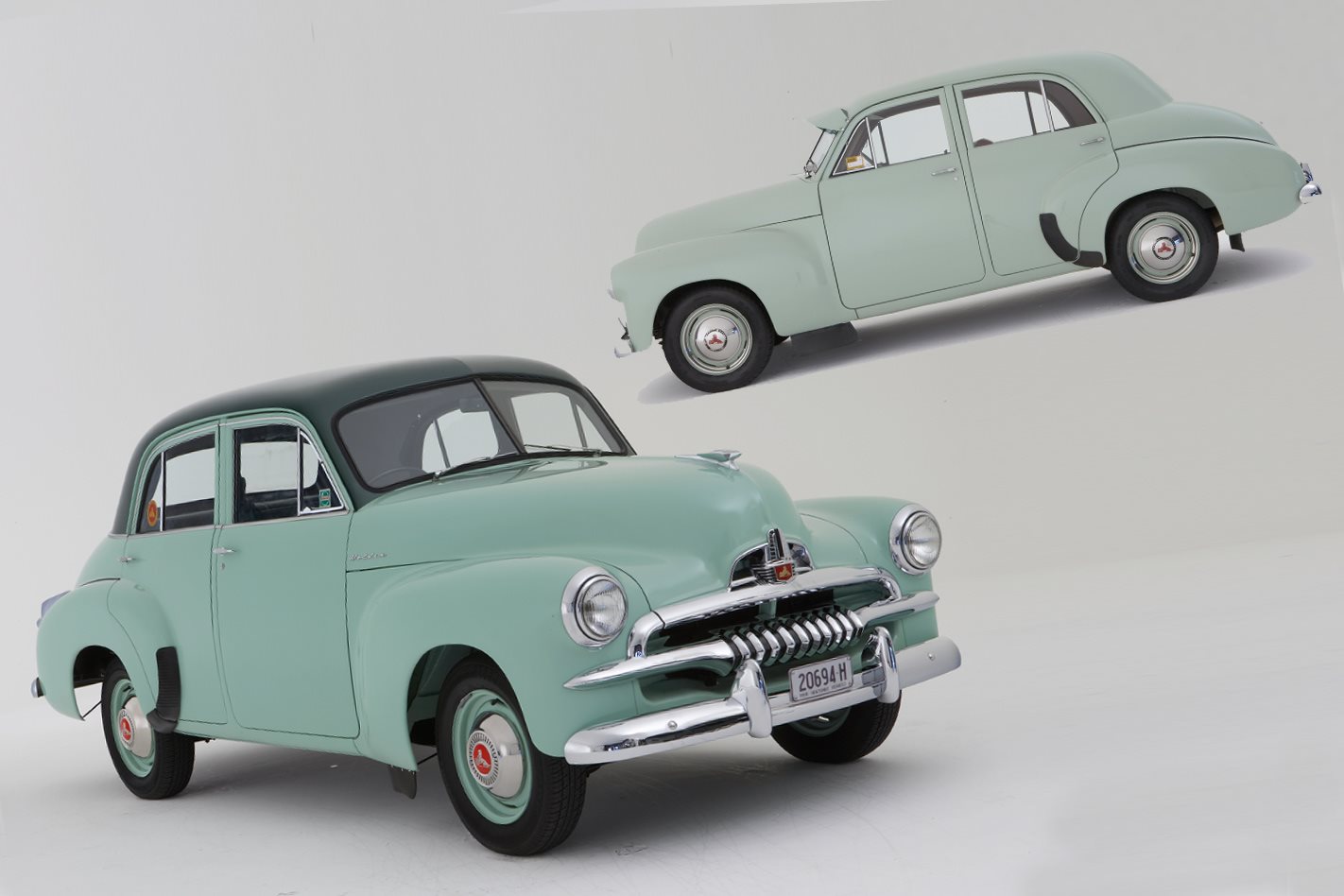

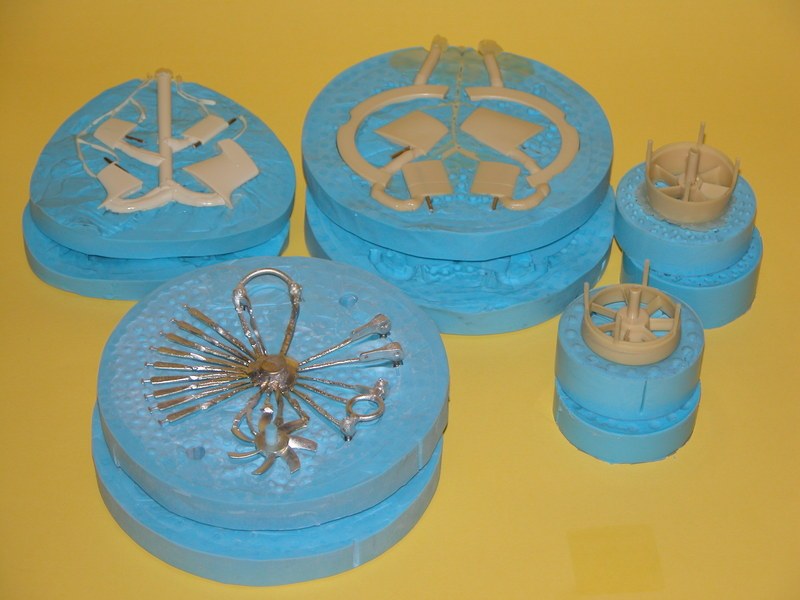
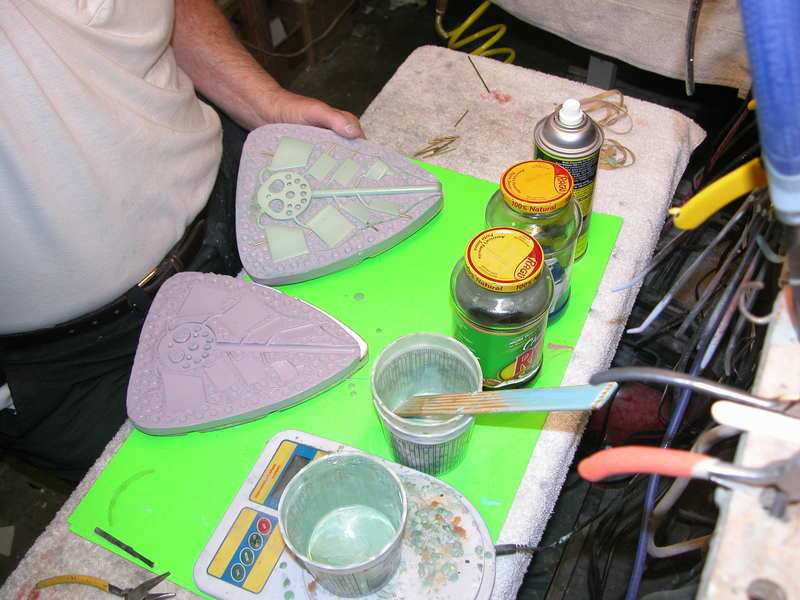
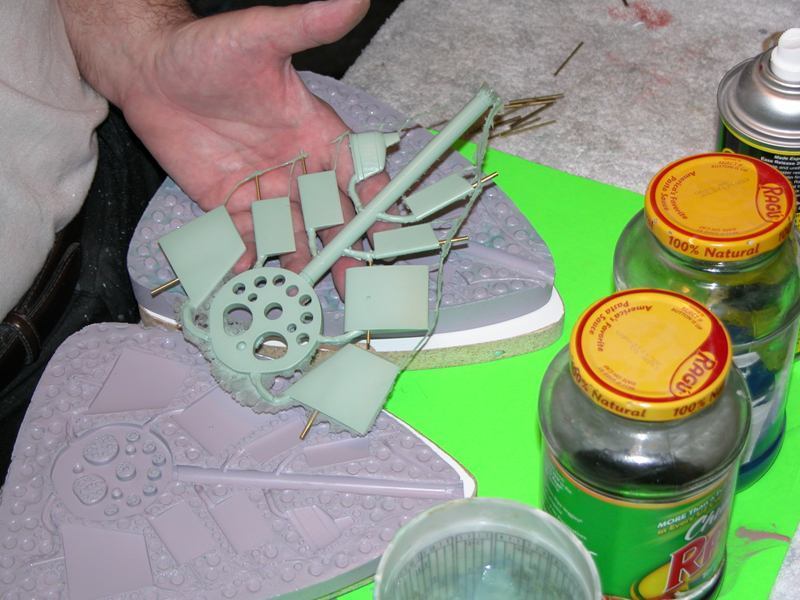
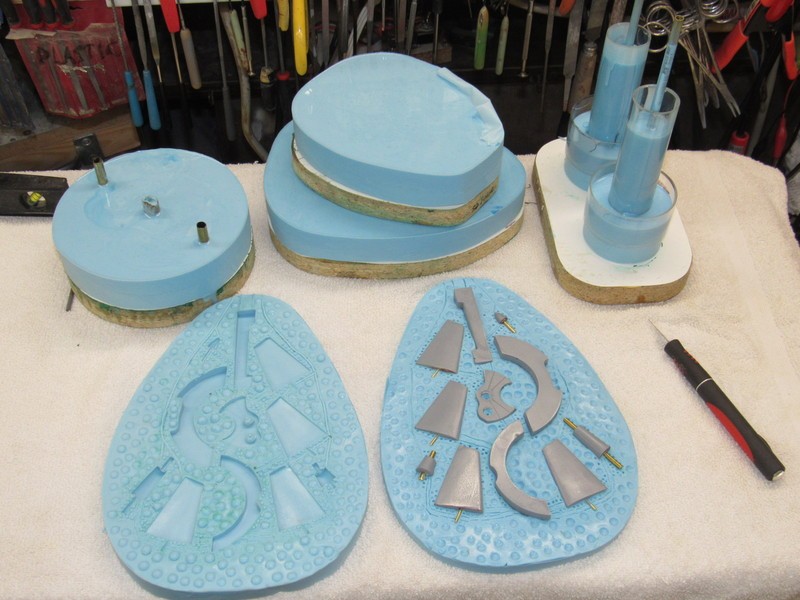
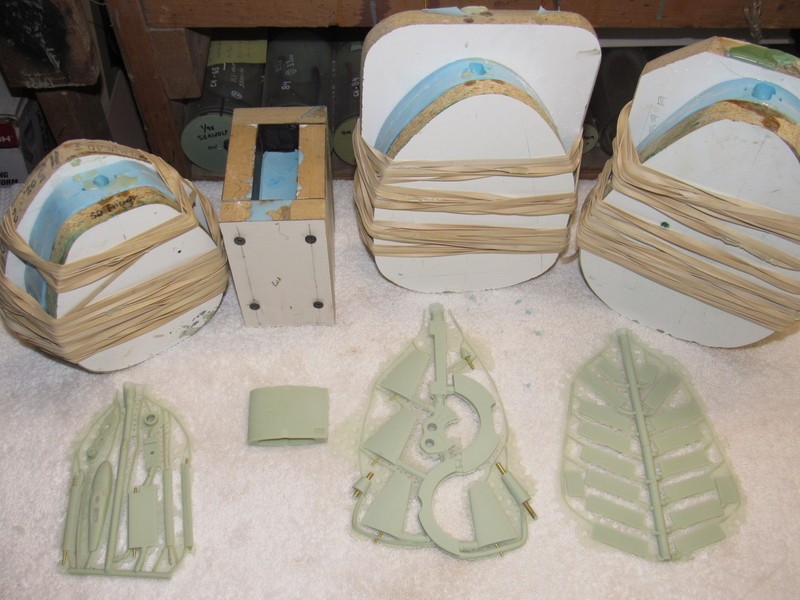

Comment